Escapes, Attempts, and Contraband
Escapes:
“In this book to hope to show escapes, attempted escapes and possibly assaults on staff or other related issues.
In 1880, just 2 years after the BC Penitentiary opened, the Inspector of Penitentiaries from Ottawa (and strangely, to me he was referred to as travelling from “Canada”) conducted an inspection, and in his report he commented:
“The Penitentiary is situated on the outskirts of an impenetrable forest which invitees evasion and renders recapture extremely difficult”, he then recommended that a fence be built.
Later events proved him correct, because that year there were 5 escape attempts, 2 of which were successful, the other 3 convicts being brought back by guards.
Records for the period shortly after that are rather sparse, however 118 Thomas O-Connor attempted escape in 1883. 1 escaped 23 May 1881, and on 23 May of 1882 3 attempts-all recaptured. In 1883 there were 3 attempts, 1 successful, 2 recaptured the same day.” ~Anthony Martin

Wanted poster for Bill Miner
“Perhaps the most celebrated escape was that of Bill Miner on 8 August 1907. Many books have been written about him, but here is a brief picture. He was an American and had served much prison time in the US for stagecoach robberies. He eventually came to BC and was in the business of robbing trains. It is believed that he originated the phase “Hands up!”. He was eventually caught, sentenced to Life imprisonment at Kamloops and confide in the BCP. It is my belief that his escape was “engineered” by CP Railways.”
Below: Mugshot of Bill Miner (a.k.a. Edwards), Prisoner #980

Below: 2 other prisoners escaped at the same time as Miner.
Directly Below: W.J. Woods, Prisoner #1009.
Below: A.F. McCluskey, Prisoner #949
“In 1883 2 convicts planned an escape & it was found they had prison-made weapons, however their plans were discovered & the Warden sentenced them to 60 lashes, but after only 3 dozen were applied they begged for mercy and the balance were suspended.
In March 1893 convict John McCabe attempted an escape but was discovered and the attempt was unsuccessful. In December the same year 3 tried to escape while working in the ravine. One was seriously injured when shot by the guards and the attempt was defeated.”
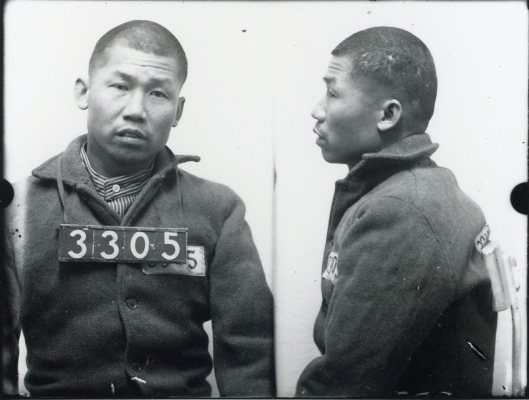
Prisoner #3305 Wo Sing
“There were a number of escapes between 1900 and 1930 and brief details are as follows: In June of 1920 2 convicts (F Hoyt & Peter Marchuk (alias Marks) escaped from a gang working on the Glenbrook sewer (i.e. outside the prison walls). Hoyt was recaptured near the Pitt River bridge, and Marks at a later date. In July of the same year 2 men serving life for murder escaped from the hospital which was situated outside the prison walls. One was George Van Horst who was soon recaptured (& attempted to escape again some time later) and Mario Montenario who is officially still at large (but also presumed dead). In 1928 #3305 Wo Sing escaped (while working at the Warden’s House -again outside the walls). It was believed he was assimilated into Chinatown in Vancouver and was never recaptured.”
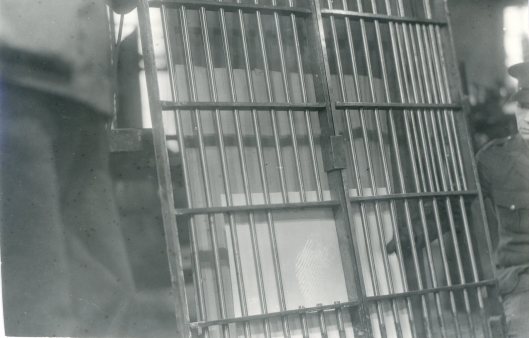
The bars that were cut
“On Sunday, 5 March 1939, 3 convicts (John Wasylenchuk; John Godbould; & “Frenchy” attempted to escape. One sawed through the bars, got out of his cell, and released the other 2. One guard (Jock Ewen) was attacked, tied and locked in a cell (he suffered cracked ribs &contusions). Night Keeper Bill Davies drew a revolver and foiled their attempt. They were captured & subsequently punished. Bill Davies was given a citation and officer was fired (or as it was expressed at the time: retired to promote efficiency!) Wasylenchuk was professional bank robber and his name appears in several other stories.”
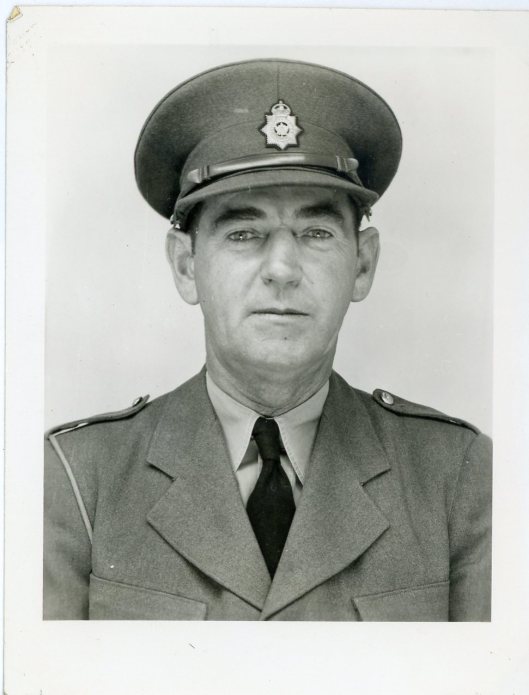
Keeper W. Davies
“In later years there several other escape attempts. In 1956 Brownie Munavish was successful in escaping although he was not out very long. He buried himself in the cinders from the boiler, and was taken to the dump in a prison vehicle. Another con escaped later by hiding in the chimney of the barbecue pit, and then going over the fence of the exercise yard late at night. Obviously he was a very small man.
On 5 March 1963 2 cons, Eddie Beaver and Thomas McCauley went over the wall, the first to go over the wall in 40yrs. Beaver was recaptured in April & McCauley at a later date. Beaver came to an untimely end many years later when his body was found in a manhole (minus hands & head). Although he could not be definitely identified the police were quite sure it was him.”
“In 1973 Jack McCann escaped leaving a dummy in his cell. the dummy’s head used hair “snitched” from the barber’s shop.”
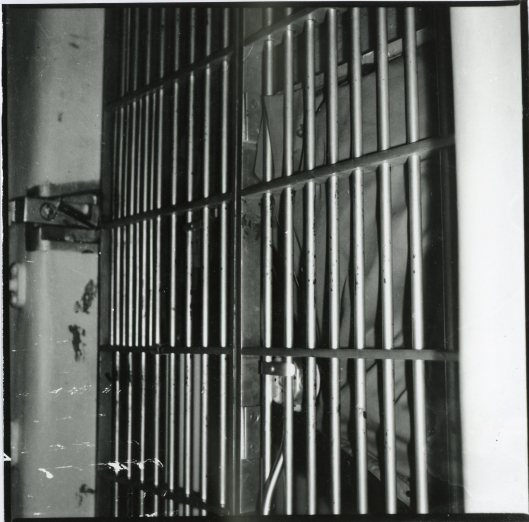
“Note the jacket obstructing the view of the cell. The officer should and probably was disciplined for not noticing this.
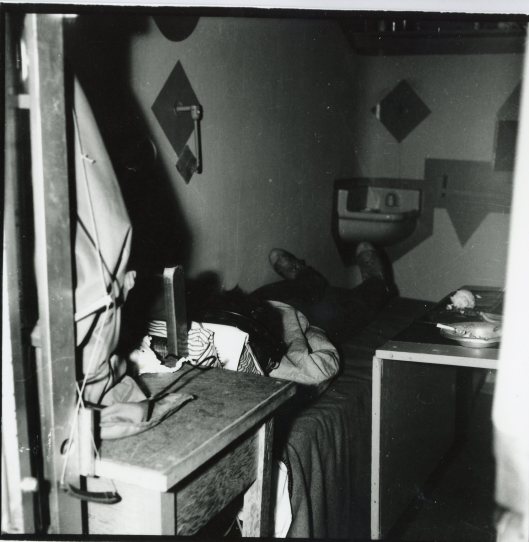
“View of the dummy with the cell door open 19 May 1973”
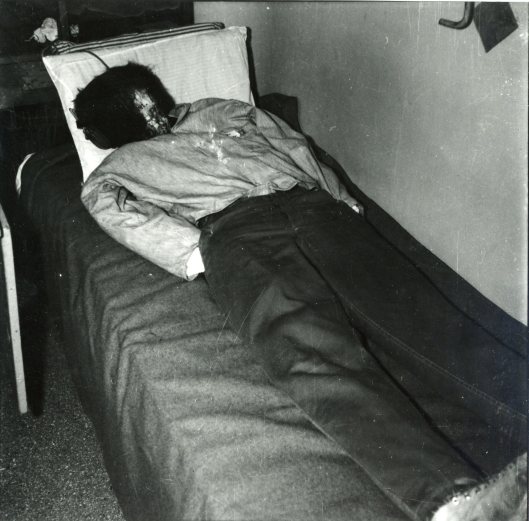
“The dummy taken inside the cell.”
Planned Escapes:
“About 1966 (when although my official title was Head Clerk I was always referred to as the Warden’s secretary) I was asked by the Warden if I could get a pen with an ordinary nib. I supplied the pen and asked if he needed ink, to which he replied with a smile, “No, Harry will provide that”. Harry was the Deputy Warden and it didn’t seem particularly funny at the time, but what he meant that Harry was going to make the ink -which was urine! A stool pigeon had informed that there was an escape planned and messages were going in/out using secret ink (urine) which only showed up when it was heated. The plan was to use a duct which went from B7 cell block down to beneath the stores and to the Warden & Dep Warden’s homes. It was a service duct about 5 – 6 ft square and contained electrical, and steam pipes. the 4 inmates who were involved were scooped (i.e. removed from their cells) and despatched to other prisons (Dorchester, Kingston, SVP, and Prince Albert). This was done in the evening & they were not told anything, but probably guessed. Management then installed a barrier (i.e. a barred prison gate with lock) in the duct. When the prison finally closed, I got a staff member to take out the lock (which is now in my possession) and I took pictures of him doing so, as shown here.” ~Anthony Martin


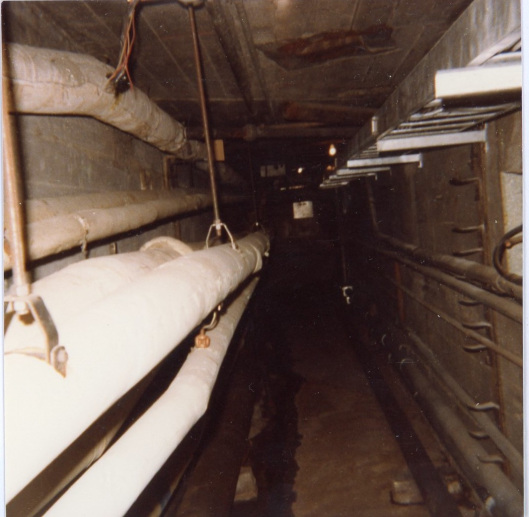
“The service duct showing the array of pipes it contained.”
Below: “This is a staff member taking out the lock for me after the closing ceremony.”
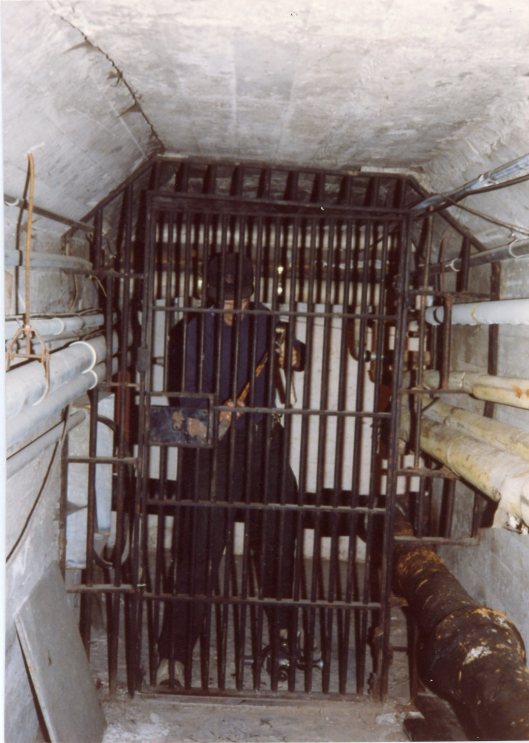

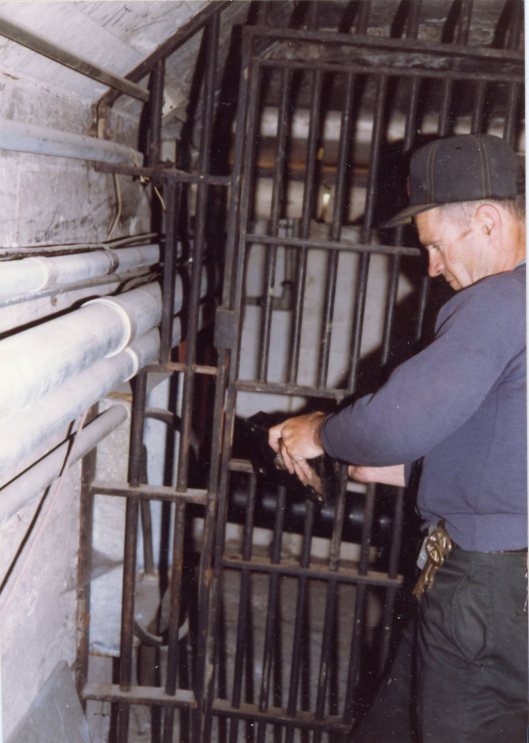
The Frank Newton Saga:
“On Friday 23rd December 1966 (my absolute worst Christmas ever!) I had not been home very long when the phone rang the Deputy Warden instructed me to return to the prison IMMEDIATELY. He briefly told me that someone had had his hand blown off (and I thought it was at work). I returned to the prison at once to learn that a staff member had received a Christmas parcel, opened it in the presence of his 11 yr old son, and it exploded (it was a bomb). The explosion destroyed the kitchen, blew off Newton’s hands and injured his son (who subsequently lost the sight of one eye.) As we had no idea where this originated I was required to set up a phoning bee to advise all staff to not open any parcels. Now you have to realize, this was a Christmas long weekend, many staff would be partying, and of course when they were told what happened, wanted to know all the details, & I simply did not have the time to go into that. Furthermore, as the night went on, there were more men who had obviously had a few drinks, and it was a very stressful evening. In the midst of all this, my (officially) immediate boss, a man who was into detail & regulations, told me to make sure I kept track of all the long distance calls, and when he wouldn’t stop pestering about this said to the Warden, Charlie will you tell him to do as he’s told, and the Warden did just that. While all this was going on, the incident was the main topic ion the news and the prisoners could hear all this, and were constantly cheering and in general kicking up a ruckus. We cut off the phoning at about 10.30, The Warden & Regional Director went into seclusion; I went home and kept in touch with the prison until about 1.00 am and informed the brass what was going on. I was back in the prison at 0700 competing the phone calls.
Meanwhile, at the Royal Columbian Hospital Newton was undergoing surgery. When he was able to speak he told the police the name of the man who had sent the bomb. They were never able to prove it but I am sure Newton knew who it was. The RCMP did an absolutely marvellous job. They came up with the name of the book (Anthony Adverse) and were able to state that it came from the prison library. What follows from now was never proven, but the police believed most of it, and i certainly do. It was suspected that the bomb was actually made in the prison, and carried out wrapped in Khaki (the colour of our uniforms) i.e taken out by a staff member. The person(s) involved may not have known exactly what they were doing, but knew they were doing wrong, and subsequently would probably have very guilty conscience. I can’t remember the dates, but over the next few weeks 2 staff (or ex-staff) members died in very mysterious circumstances. One appeared to have committed suicide, and the other was found under a log boom in the river. Another staff member who lived on the reserve, had bullets fired into his garage in the early hours of the morning, and shortly thereafter resigned (this may or may not have had anything to do with the Newton case).” ~Anthony Martin
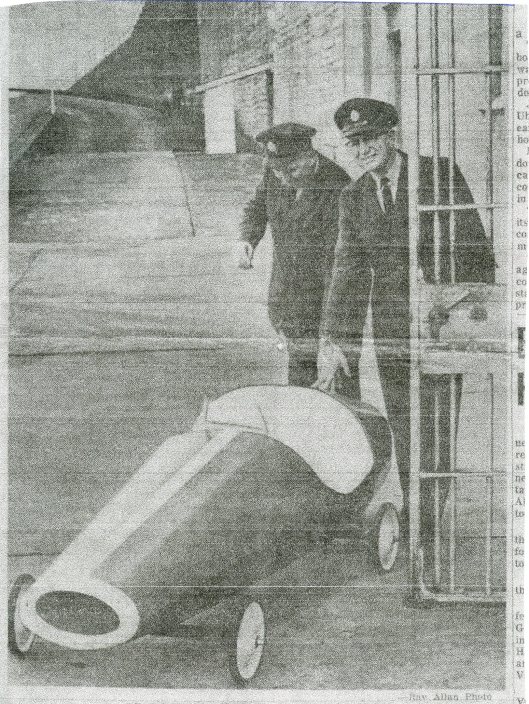
“A fund was set up called the “Norman Newton fund” (Norman being the name of his son). The staff raffled a go cart and a large sum of money was raised. I was the treasurer of this fund until it wars handed over to the trustees (One of whom was Simma Holt a well-known reporter for the Vancouver Sun newspaper). The handover of the fund to the trustees was done at my home on 7th April of 1964. I was amazed that after just a traumatic event Newton was not only able to talk about it and meet people he was able to sign his name and hold a glass in his “phon[e]y” hands. Eventually Newton returned to work (but not as a guard) and the only concession he requested was that he be allowed to park his car under a lamp on the drive rather than in the parking lot. The only significant effect it seemed to have on him was that he was very emphatic that he get every financial advantage available to him. I say this not as a criticism, but in amazement that this seemed to me to be the only effect. After he retired he lived to the age of 75, sitting in his chair after supper, had a heart attack and died. Newton lived in the area in Surrey that was known as “bird land” because all the streets in that subdivision was named after a bird (e.g blue jay, oriolle etc) and it seemed to me to be somewhat ironic that the criminal (a drug addict) who Newton claimed to have sent the parcel, clearly went back into the drug business, and his corpse was found in a manhole………………………….in Birdland!” ~Anthony Martin.
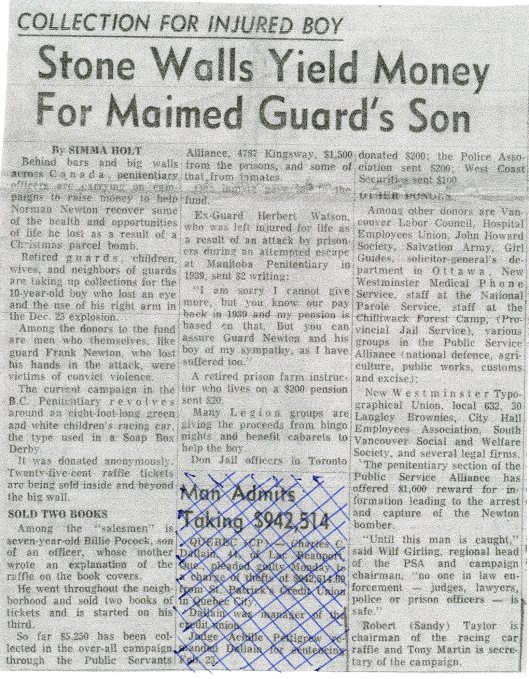
Contraband:
Asterisks on bottom left hand corner of photograph (below):
“*This looks like a “bug” -a device invented by convicts which was used to insert the electrical system to boil water. the rest are weapons found when “shaking down” cells. Usually made in prison workshops”
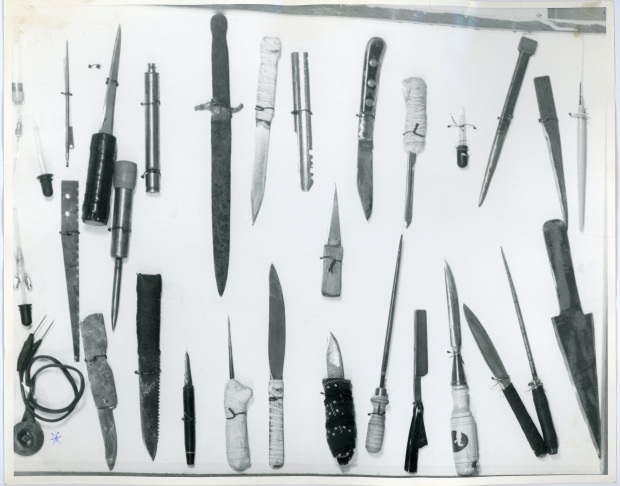

“Prison made grappling iron used in the Beaver/McCauley escape in 1963”
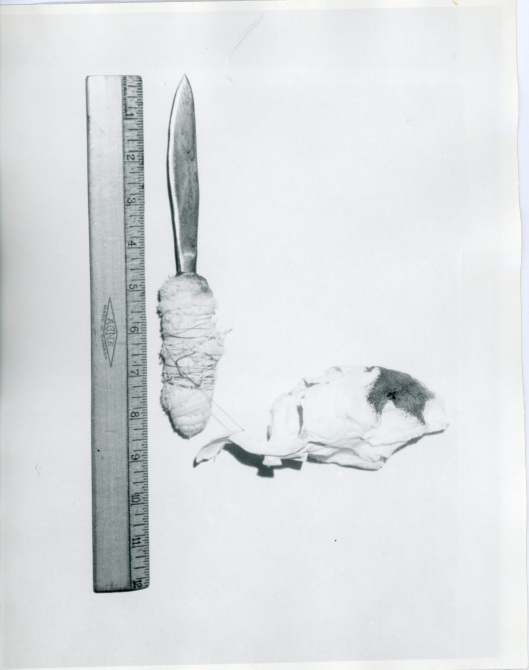
Knife made in prison.
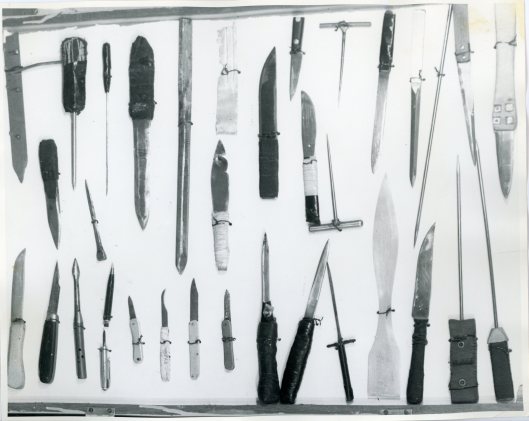
More prison-made weapons!

“Library books were often used to transfer contraband such as tattoo needles or drugs between cells.”
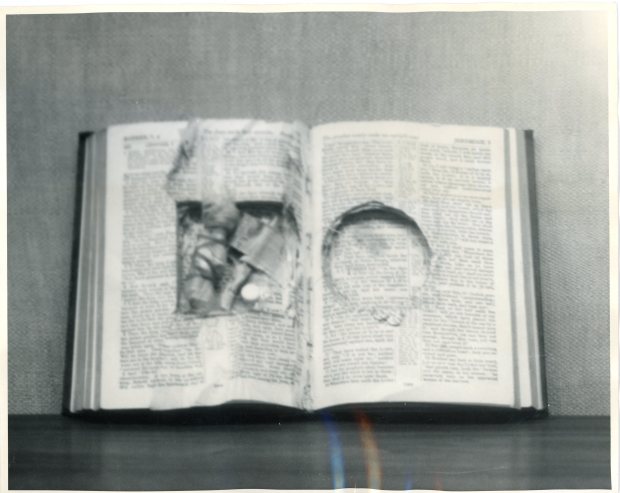
“This is probably a tattoo needle.”
Home Brew:
“A favourite pastime of convicts was to make “home brew”, either to drink or to sell. You can make booze with almost any vegetable or fruit, and the cons used to say that the only reason Indians never grew beans was because that was one of the very few things which would not turn into alcohol. They were very ingenious. A Mason instructor found brew in a concrete building block, but thought it was too easily found. He checked further & found another brew further back….the first one being just a distraction. A paint instructor found brew in his shop, but didn’t report it, he simply put rock salt in it, figuring that if the cons thought it was still working they wouldn’t try making more! In the blacksmith shop a still was found in the cupboard with 2 doors, one above the other. The still was counterbalanced & when the bottom was opened it reversed! Nonetheless it was found! Below are pictures of yet another still which was also found the blacksmith shop (in Drumheller Inst.)”


